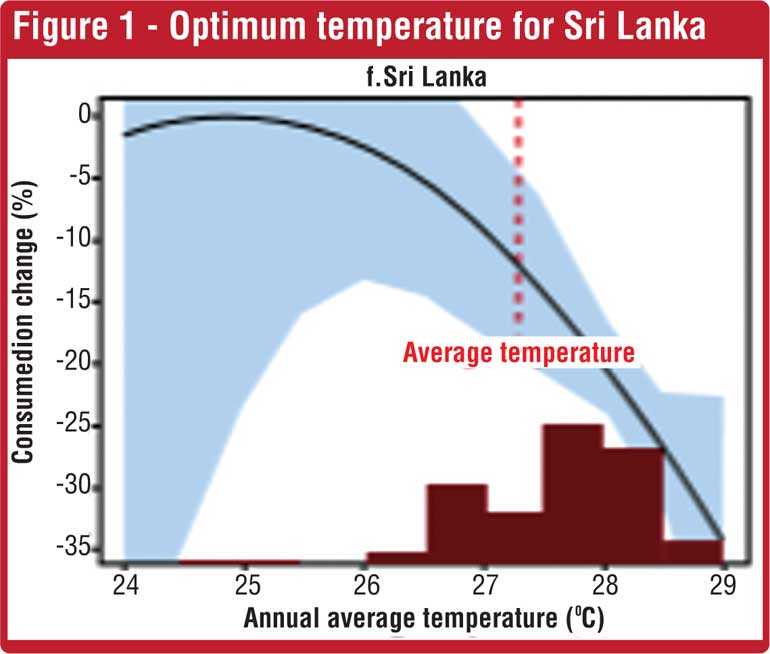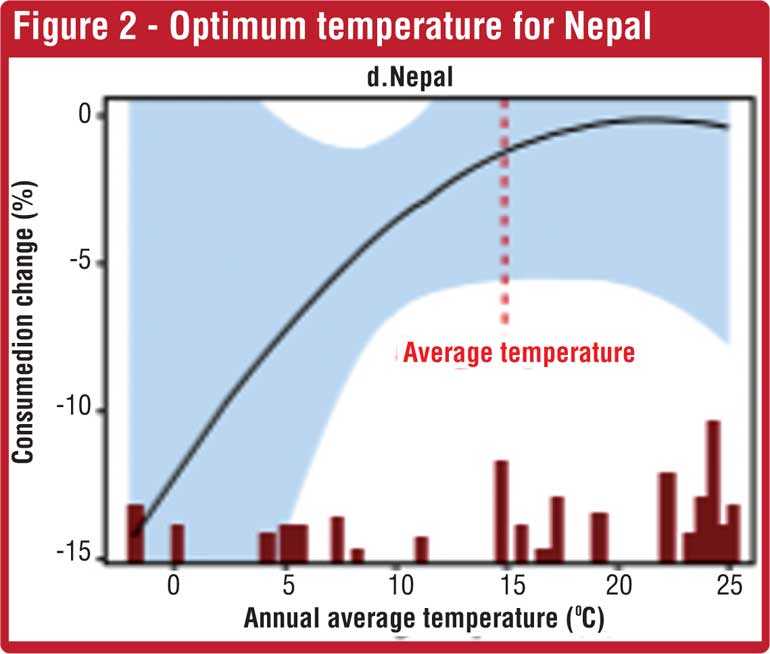Monday Dec 22, 2025
Monday Dec 22, 2025
Monday, 2 December 2019 00:00 - - {{hitsCtrl.values.hits}}


The most recent article titled ‘A child’s guide to MCC Compact in Sri Lanka’ is a perfect guide to show how to mislead a child on important aspects related to development economics. If the author wrote it in a different country, an Advanced Level student may have sued him for insulting their level of intelligence and knowledge of sustainable development.
Out of 11 questions asked by Asani, only two questions are related to what the compact means and balance were about aspects which will make no contribution towards obtaining an understanding of what MCC compact will bring to us. The tenth question – most important question about how the compact would impact country’s growth rate -- was answered in the negative by asking Asani not to “have such high expectations”.
The grandfather said that it will “lay foundation for high economic growth” and then added that there are many more things which Sri Lanka has to do to accelerate economic growth. Combined with these, this Compact will take Sri Lanka to a higher level of prosperity.
The most important question as to whether the compact would influence these many more things needed to accelerate economic growth adversely was neither asked by Asani, nor answered by Sarath Mahaththaya nor author of the article nor captured by Ricardo Hausmann et al who carried out Constraints Analysis for MCC Compact in Sri Lanka.
Having studied these issues in reasonable detail we can say that the two components of MCC compact which Sarath Mahaththaya explained about in the article will definitely influence adversely those many other things needed to accelerate economic growth.
I don’t think there is anything else to respond to in that full-page article. The author gave a perfect piece of advice – “stay hungry, stay foolish”, exactly what CBSL has brought us to.

Previous beneficiaries of MCC Compact grants
Promoters of MCC Compact for Sri Lanka use the fact that MCC Compact grants have been implemented in other countries and three countries which were quoted in a recent article were Nepal, Indonesia & Philippines.
I will talk about Nepal, a South Asian country on which a lot of information is available. When we talk about desirability of MCC Compact for a country, there are certain characteristics of the country that need to be taken into consideration and when MCC Compact talks about enhancing road network, land usage, etc., we look at these characteristics.
I wonder whether two former employees of CBSL have seen the report titled ‘Hotspots of South Asia’ issued by World Bank in around April 2018. In that report, five researchers categorically mentioned that (i) Sri Lanka is the most vulnerable country in South Asia to climate risk and (ii) very high road density (148km/100km2) in Sri Lanka is one significant contributory factor towards the same. Second most vulnerable South Asian country is Bangladesh with a 168 km/100km2 road density. Nepal’s is only 12km/100km2.
In that publication they mention that in Nepal, the optimum temperature for comfortable living is 21oC while their current temperature is 16oC. So, they could have some more warming. But our current temperature is 27.5 0C, while the optimum temperature is 250C (Please see Figures 1 and 2)
It is not only World Bank which says this; even Munich Re, German re-insurer has said that Sri Lanka is second most vulnerable country in the world and most vulnerable in Asia.
So, one could see that we cannot build more roadways. I wonder whether Sarath Mahaththaya or the author knows how road construction contribute to more and more climate crisis or global heating. Road construction implies deforestation – i.e. remove vegetation which would have (a) reflected say 20% of solar radiation, (b) converted another portion to chemical energy and (c) absorbed CO2 in the atmosphere -- and then putting up an asphaltic surface which absorbs about 90% of incident radiation. This contribution of road construction towards global heating becomes more relevant when you live closer to the equator – Sri Lanka at 7oN, Bangladesh at 23oN and Nepal at 28oN.
We in Sri Lanka receive 400Wm-2, Bangladesh about 370 W/m2 and Nepal about 350 W/m2 of solar radiation. Germany, England, Japan and North Dakota can build more roads because they receive only 200 W/m2. Nepal’s road density is 12 km/100km2 compared to our 148km/100km2. While our GDP per capita per 1000km2 is $64.6, Nepal’s GDP per capita per 1000km2is only $6.35. Can you take the same decisions for Sri Lanka as those for Nepal?
We come to our conclusions about these not by looking at what Nepal is doing now nor what our ancient kings did those days. We need to understand the thermal flow rates we receive, air circulation models, how our own road construction, GHG emissions influence us vis-à-vis climate vulnerability in order to estimate what more road construction will do to Sri Lanka.
Studying the Constraints Analysis
Asani needs to understand how MCC identified projects to be proposed to Sri Lanka. They carried out a Constraint Analysis for Sri Lanka to find out what and what would prevent economic development of Sri Lanka and in doing that, they used a matrix which had six possible constraints and three types of risks which could befall Sri Lanka.
Just as much as Asani did not know what MCC Compact meant, have the two ex-CBSL personnel read and understood (a) how the constraints analysis is carried out, (b) weaknesses in that methodology although the possibility of that weakness is explicitly mentioned by the original authors, (c) how these weaknesses could influence a beneficiary country adversely and (d) how to rectify that weakness in the methodology. If only they have read, they would not have mentioned about those many other things, etc. This is what I had been trying to impress upon Daily FT readership and they deserve to be enlightened on this. Of course, it will be difficult reading.
So, Asani, when MCC Compact carried out this Constraints Analysis, they considered six main constraints: namely (a) Financial Capital (b) Natural Capital, (c) Human Capital, (d) Access to land, (e) Physical Capital divided into (i) Energy, (ii) Transport, (iii) Water/sanitation, (f) Innovations and then there are three risks also attached to these – Market Failures, Macro risks and Micro Risks.
When they carried out this constraints analysis – based on inputs provided by some businessmen in Sri Lanka – they found out three constraints in (a) Access to Land, (b) Tax Policy Uncertainty and (c) Transport.
Are you surprised about these; at least I am not.
(a) Access to land. We need to remember that there are about 208 acres of empty land at Mirijjawila zone awaiting utilisation.
I am not surprised because we generate per every 1000km2, a per capita GDP of $64.6 in Sri Lanka, whereas USA does only $6.30, Australia $7.75, India $0.67, Nepal $6.25. But are there other prosperous countries who have achieved higher levels. Yes, for example Puerto Rico, a 9000km2 (we are 65,000km2) island at 180N latitude generating $30,000 per capita GDP with a population of 3 million (ours is 21 million), 3110 t/km2 of GHG emissions and road density of 289 km/100km2, But only thing Is that they get battered by cyclones, hurricanes, etc., almost every year. Do you, Asani, want to live in a country like that? Frequency and intensity of cyclones hitting this part of the world – eastern coast of India – has been increasing during last two decades.
For us to make use of large stretches of more land, we will have to carry out deforestation and Ban Ki Moon, former Secretary General of UNFCCC, said in October 2014 that for us to avert dangers associated with climate change, deforestation should be reduced by 50% by 2030 and 100% by 2050. Now US MCC Compact wants us to carry out more deforestation.
Asani, you need to notice that Natural Capital – i.e. land, trees, water, air we breathe, etc. is also one constraint and unfortunately, we cannot live without it and it is the most easily impacted adversely by improvements in other constraints.
Fortunately, I had studied the relevant sciences – thanks to free education, my parents and my teachers – and was able to improve on constraints analysis and devise a mechanism to capture how easing of other constraints would adversely influence Natural Capital and published same in Daily FT (of 11 November 2019). So, if we improve Access to land it will surely impact Natural Capital.
Transport related constraint
Then the constraints analysis identified another constraint in Transport infrastructure and as a part of a solution for this, the Compact wants to build a 130km ring road. As I mentioned earlier our road density is 148km/100km2, USA’s is only 68 km/100km2, India’s 112 km/100km2, Australia’s 11 km/100km2, etc. Being situated at 70N we receive lot more solar radiation than those countries and our climate vulnerability is definitely partly due to this. Earlier I explained how deforestation followed by road construction with that asphaltic surface lead to greater levels of vulnerability to climate change.
Asani, your grandfather, author of that article and I belong to same generation. I also have seven grandchildren and that is exactly why I have been working long hours for last 10 years or so trying to understand climate change.
I, myself, was not thinking along these lines in 1980 – i.e. 40 years ago. You may be surprised that it is I who prepared, in 1980, the first feasibility study for use of coal – fossil fuel – in cement kilns at Puttalam and Kankasanthurai – we had a 1200tpd cement plant then and almost completed another 3200tpd plant – for funding by NDB Bank and also for a 60 MW power plant based on gas turbines in Gurunagar. Then, I did not know about these effects of greenhouse gases leading to climate change; probably no Sri Lankan did.
But my studies of climate change depicted a frightening picture of the future and that is why Greta Thunberg is also promoting climate action amongst school children and even at the UN. If you need endorsement by a royal celebrity, you could read about what Prince Charles of UK said recently at Lincoln University in New Zealand on the Zero Carbon Bill passed in parliament there.
Of course, President Donald Trump, the President of USA where MCC is based in, does not believe in climate change and does not care about it. He has a 9,000,000 km2 country, a road density of only 68km/100km2, land productivity of only $ 6.30 per capita GDP per 1000km2 (which is only 10% of ours), situated from 300N to 600N to play about with. We can’t do the same things – we are already worse than them in respect of land productivity, road density, and more than anything else in respect of climate vulnerability.
Selecting between alternatives
So, we need to select between the two options of (a) accepting $480 million MCC compact as is to-day – in four instalments – and suffer worsening climate risk vulnerability or (b) not accepting the grant and creating our own funding for the development activities.
In making this decision, we need to consider what and what could happen in case we accept the funding and carryout the suggested “development” activities. We were the 98th most vulnerable country to climate risk in 1998 or so and we became fourth most vulnerable country in 2016 and second most vulnerable country in 2018. If one looks at what changes we did to our physical capital during that period, especially to transport infrastructure one could see changes that would have definitely made us more vulnerable – the increases in road density.
Arising from (a) enhanced import of vehicles to please both politicians and public and (b) reduction in petrol prices in the local market, the petrol consumption increased from 767,000 tons in 2014 to 1,179,000 tons in 2018, i.e. an increase of 53% in four years and our GHG emissions from transport would have increased significantly during this period.
This increase in road density and GHG emissions increased our vulnerability to climate risk at an unprecedented rate and the outcome is our becoming the second most vulnerable country in the world. So, if we accept this grant and increase our road density further, we would enhance our vulnerability to climate risk even more.
Munich Re rated us as the fourth most vulnerable country in the world in 2016 due to our incurring a loss of $ 574 million resulting from this climate vulnerability. This is the type of price we paid in 2016 and 2018.
So, if we accept this $480 million and carryout more roadway construction, etc. and face such a huge loss to the economy, it is not worth it.
On the other hand, who will give us this sort of money? We will have to earn this. Of course, we have brought in money like that.
World Bank gave us a $100 million grant for tsunami housing (in year 2006), but gave us only 25% and promised to give us balance 75% once we complete a 100% Beneficiary Verification Audit to cover 74,000 beneficiaries from Vadamarachchi, Mullaitivu, Batticaloa all the way to Kalutara along the coast simultaneously in two months. No other consultancy firm quoted for the job and we completed the job and we got this money for Sri Lanka. During the last days of project main question, the then Secretary to Treasury who chaired weekly meeting at treasury would ask was whether we have submitted the report. So, for us this is not that sort of big money.
Then in November 1989, we developed a method to dry coir dust which was lying in heaps and heaps in the coconut triangle and our colleagues briquetted the dried coir dust. There were many others – CEB, IDB, CTC, etc., who were trying to do it and use briquettes instead of firewood which was available at Rs. 1.50 per kg. Fortunately for Sri Lanka, they didn’t succeed in drying the coir dust economically. But we did, and then carried out market surveys and product development to command a price of Rs. 21 per kg (that was price of sugar at that time). Now, the entire government machinery is unable to solve the issue of municipal waste. Last year we got more than $40 million from export of those coir dust briquettes.
We can surely bring in revenue to match those estimates. Your Grandfather or author may not have been able to do that. I remember him writing to Daily FT paper on how the then Governor of CB sent some senior officers to a few countries – if I remember right he was sent to Australia and Governor went to Libya, then under Colonel Gadaffi, friend of our own President – to see whether we could obtain some short-term cash funding to ease a pending financial crisis. He had not been successful. After reading how he spent irrelevant 59 column inches before starting on that last 11 column inches which explained MCC Compact, I am not surprised at all about his failure in Australia.
Conclusion
In this article I tried to explain my thoughts on MCC Compact grant. It is based on my study of the following: (i) Chapter 3 of MCC’s own guidelines on how to conduct a constraints analysis, (ii) 97-page article on growth diagnostics which formed the basis of HRV/constraints analysis, (iii) Constraints analysis for Sri Lanka document, (iv) Agreement for MCC grant made public by Ministry of Finance and (v) Other environment based evaluation methodologies adopted by international organisations like Global Green Economy Index (GGEI).
Then there are other 1000s of pages on climate change, greenhouse gases – that World Bank’s report is only one of them – which helped me to make the links between these different publications and my own studies on Quality Function Deployment Matrix. I knew there was an issue; wanted to get to the bottom of it, wanted to identify a solution and that is what I did in these three articles – this is the third one – on MCC compact. I wish others who write on this read at least the first four of above-mentioned references.
Asani, I have given necessary references, so that you or anybody else interested in the topic could read these and arrive at a conclusion. If anybody needs guidance on understanding any of these, I am prepared to help.
But please do not sacrifice Sri Lanka for the sake of $ 480 million. We can make it ourselves and we have done it in the past. Let us say no to MCC Compact as it has been formulated today.
(The writer is Managing Director, Somaratna Consultants Ltd.)